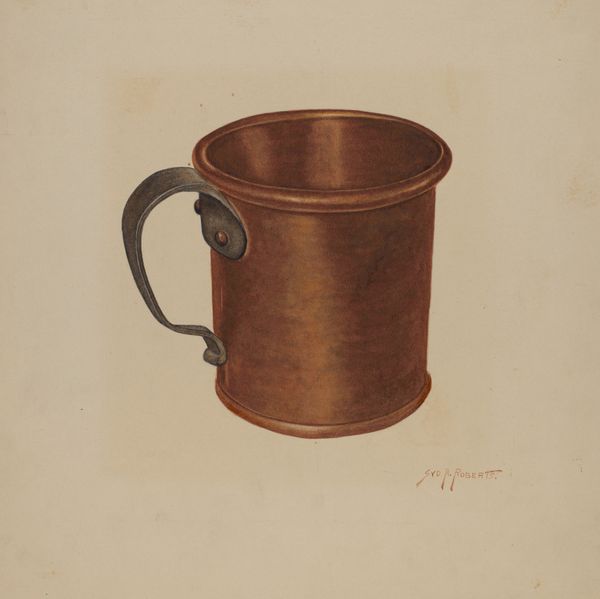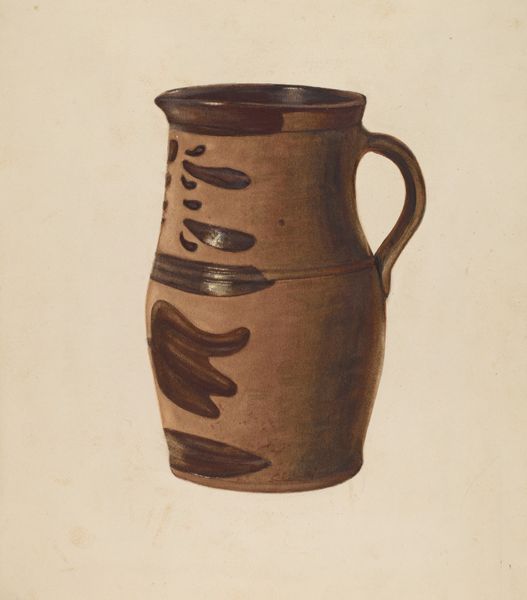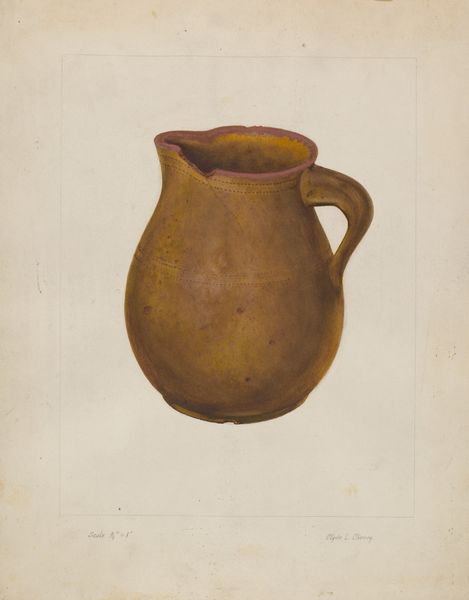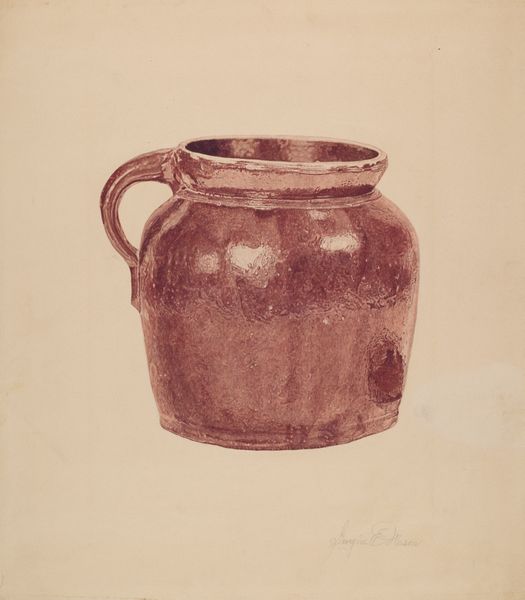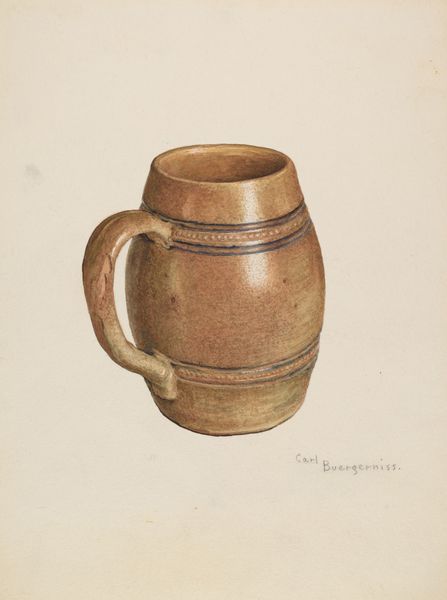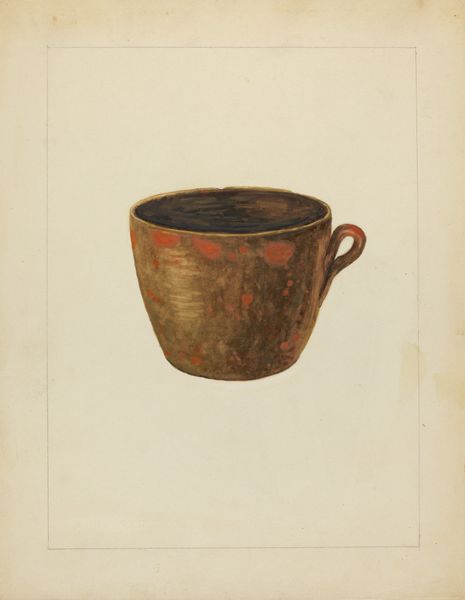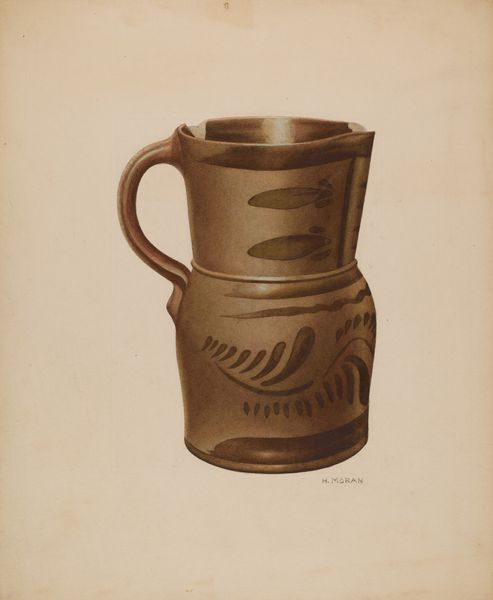
drawing, earthenware, charcoal
#
drawing
#
still-life-photography
#
charcoal drawing
#
earthenware
#
watercolour illustration
#
charcoal
#
watercolor
Dimensions: overall: 43.4 x 29.3 cm (17 1/16 x 11 9/16 in.) Original IAD Object: Rendered actual size.
Copyright: National Gallery of Art: CC0 1.0
Editor: This is "Earthenware Pitcher" made around 1938, a still-life executed in charcoal, attributed to Richard Barnett. It gives me a feeling of muted simplicity, almost stark in its presentation. What do you see in this piece, especially regarding its formal qualities? Curator: The reduction to essential form is indeed striking. Observe how Barnett focuses primarily on volume and texture. There's a conscious suppression of detail, directing our gaze to the interplay of light and shadow across the object's surface. Notice how the subtle gradations in tone suggest a rough, almost primal materiality. Editor: I see what you mean about the texture. It's not a smooth, refined object at all. The artist made interesting choices. Why a drawing of a simple jug? Curator: Consider the semiotics of the form. The pitcher, devoid of overt decoration, becomes a signifier of utility, of fundamental human needs. Barnett is isolating and examining the purity of its function through visual representation. It also may be useful to remember that Barnett created many still-life drawings. He could have been exploring the theme itself, not only individual shapes and meanings. Editor: That's a very structural way of looking at it. By focusing on the simple structure and tonal values, the artist brings our attention to fundamental values rather than specific detail. It certainly highlights that focus. Curator: Precisely. It's the essence of the pitcher, not its mere appearance, that captivates. Are we looking at an everyday object, or is the object a starting point to an in-depth observation? This drawing invites us to reconsider the intrinsic qualities of objects and question the nature of artistic representation. Editor: So it's less about the pitcher itself and more about what the pitcher *represents* visually. Curator: Precisely. Thinking this way opens an entirely different perspective into the artwork itself and to the artist's approach. Editor: I appreciate your perspective; it certainly helps me focus more on what's actually in front of me!
Comments
No comments
Be the first to comment and join the conversation on the ultimate creative platform.
